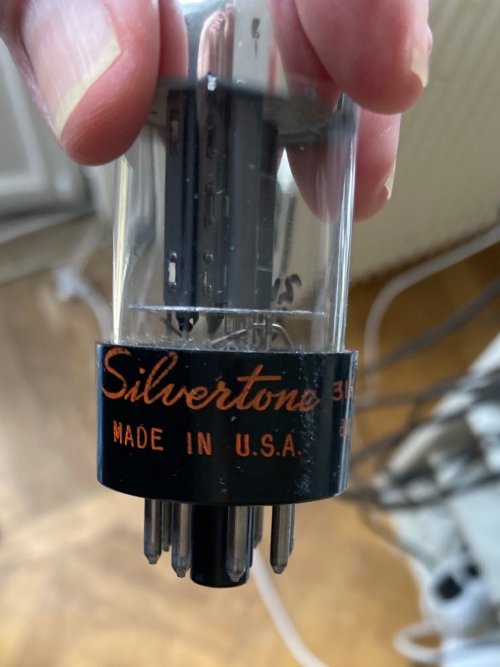
Oh boy....you gonna open a can of worms on this topic, bottom line, they seem to be a collectors item, I read that the JAN-CHS 3 hole 6SN7GT (1952) are built the same/or better than the Sylvnia VT-231 (1940s?) with better dynamic sound. And have a higher than average resale value because of that. Arguably in the ALL TIME top 5 list of 6SN7GT drivers. And yeah, there's skeptics out there that say they can't tell the difference blind folded. Will find out for myself one day, maybe. Been saying that for a couple of months here!

(Cry Wolf?)

from page 1 of this cool thread... (read page one...all of it.. good stuff there)!
[3 holes in each plate, copper grid posts, bottom getter, green labels, black base and plates, vertical date code (read from top-down) ‘2xx’ with ‘xx’ representing week #, 'polished' silvery rectangular mica]
[NON-1952 vintage short-bottle 6SN7GTs can have ROUND MICAS and NEVER have 3 holes per plate [only 2] - check for an example in my photo gallery]
● “One tube that you should look out for is 1952 Sylvania 6SN7GT. It's constructed with the same tooling as the 40's VT-231, but this tube is different in that it actually has good, propulsive base. I can only speculate why it sounds much better even though the tooling is the same. But it is certainly one of the top 5 6SN7s on my list. For a while, I thought all these Syl rectangular plated 6SN7GT were all the same, but it turns out my previous 1952's were on their last legs.” –Len
● “The best treble I've heard is the 1952 Sylvania 6SN7GT "Bad Boys" (I refer to these tubes as Syl VT-231s on steroids - better treble and rock solid bass). The first time I heard the 52's, I literally had an "oh my!" reaction to the treble.” –Len
● “The 1952 Sylvania 6SN7GT shares the sonic characteristic of the previous 6SN7GT/VT-231 tall bottle, except many say it is more refined and has significantly more (clean) bass.” –Len [in personal correspondence with author]
● “A tube with what is imo a slightly dark and effortlessly natural sound. An extremely sweet (but not overdone) midrange. There is roughly the same amount of slam as the Ken-Rad VT-231 [KR], yet the slam is definitely less visceral than the KR. This is an extremely musical tube, with a less airy sound than both the KR and Raytheon [RT]. The treble on this tube is more ‘tubey’ sounding, and is less cold than the KR and certainly the RT. What surprised me was that there was slightly less discernable low level detail than the KR. Low level detail is the same as the RT. Instrument separation was slightly less than the RT. A completely non-fatiguing tube to listen to. Female vocals are a joy to listen to on this tube – echoing another member, I really feel like reaching across and getting to know Diana Krall a –whole- lot better with this tube.
” –adhoc
● “If you can, try the Sylvania JAN-CHS-6SN7GT from 1952, bottom getter - incredible bass, warm lovely mids and very extended sweet highs. Some days I think this may be the best sounding 6SN7 ever made.” –Robert H
● “The '52 Syl came to me from Neville in Australia who had a big stash and I first posted about them on Tubes Asylum and coined the "Bad Boys" moniker that still sticks. Your description is dead on, later in '52 the tube changed to a shorter bottle with round serrated micas - an ordinary, dry sounding tube - but it does have a 1952 date code and many sellers try to pass it off as the good ones. All around this is one of the best 6SN7's ever made.” –Robert H. (in personal correspondence)


























